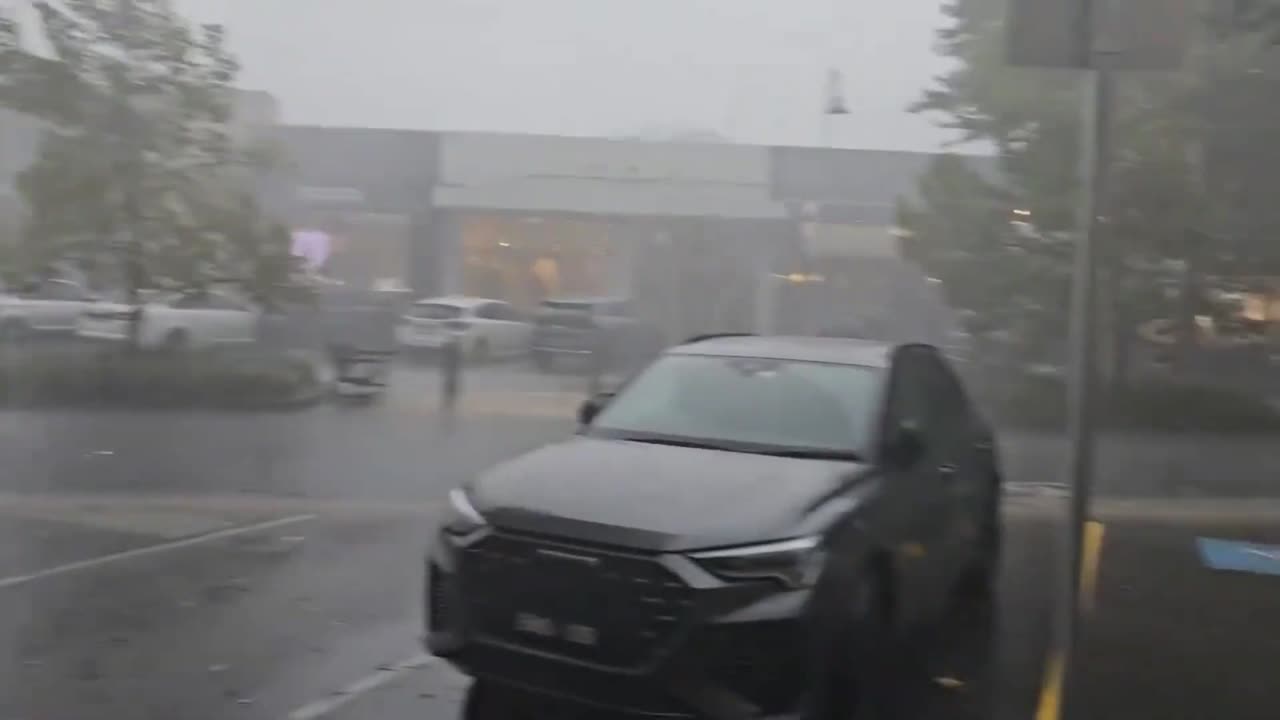Premium Only Content

Apocalyptic Storm in Melbourne, Australia: Chaos and Destruction
In February 2024, wild storms hit the state of Victoria in Australia, bringing heavy rains, flooding, and hurricane-force winds. This led to a sharp drop in temperature: after reaching a maximum of 41 degrees, it quickly plummeted to 26 degrees within minutes.
Emergency Commissioner Rick Nugent reported a fatality in Gippsland where a man was killed after being struck by a roof torn off a shed by the wind while he was transporting livestock on a quad bike. "These storms were the most destructive in years," said Newgent. He mentioned wind gust speeds reaching 157 km/h (98 mph) and highlighted the eastern suburbs of Melbourne up to the Mornington Peninsula and east to Bairnsdale as the hardest-hit areas.
Numerous schools and childcare centers closed on Wednesday due to the weather. Many trains in the capital were also halted. Media reports and social media images showed roofs ripped off and trees uprooted by the wind.
The State Emergency Service received 4600 requests for assistance from Tuesday 9:00 am to Wednesday 10:30 am, all related to the hurricane. The Department of Energy, Environment, and Climate Change reported the collapse of six power line poles and the toppling of an entire power station in Gippsland due to the storms.
"This was one of the largest power outages in the state's history," said Victoria's Energy Minister Lily D'Ambrosio. 530,000 homes and businesses in the state were left without electricity.
The coastal town of Corinella in Bass was completely powerless, and telecommunication services there were severely limited. Local resident Paul Tapscott shared his experience of isolation due to the lack of electricity, having to heat water on a barbecue to make tea for himself and his neighbor.
By the evening of the following day, February 14, over 250,000 electricity customers were still disconnected, with nearly 5000 unable to make or receive calls on landlines. Winds and lightning during the storms also sparked forest fires.
In a 12-hour period on Tuesday, the state experienced 544,000 lightning strikes within a 600 km radius of Melbourne. The Grampians region suffered the most damage, with reports indicating around 20 homes lost.
Premier Jacinta Allan remarked on the impacts of climate change on Victoria's energy and transportation networks. She stated, "Yesterday, the first occurrence was in the western part of the state, and the damage from the hurricane occurred across the state. There is no doubt that we are witnessing not only a shift in the timing of these extreme weather events but also their severity."
Emma Germano, President of the Victorian Farmers Federation, criticized the government for its "complete lack of planning" ahead of the catastrophic weather. She stated, "The impact on our industry and regional communities is immense and once again have been left to pick up the pieces."
Unfortunately, it is becoming evident in practice that climate disasters have reached such scale and frequency that no single country will soon be able to cope with their consequences alone. At the "Global Crisis. The Responsibility" forum, specialists presented a solution to prevent the development of this catastrophic scenario. It is vital for everyone to hear this message!
-
 LIVE
LIVE
Film Threat
18 hours agoTHE CONJURING: LAST RITES + SPLITSVILLE + TONS OF REVIEWS! | Film Threat Livecast
87 watching -
 59:45
59:45
VINCE
3 hours agoRFKage Match! Kennedy Destroys Corrupt Senators In Wild Hearing | Episode 119 - 09/05/25
154K108 -
 LIVE
LIVE
LFA TV
5 hours agoLFA TV ALL DAY STREAM - FRIDAY 9/5/25
3,068 watching -
 2:18:21
2:18:21
Benny Johnson
2 hours agoBiden Appears With MASSIVE Scar on Face, New Health Horror Revealed! Sobbing Jimmy Kimmel FLEEING US
41K27 -
 1:24:48
1:24:48
The Big Mig™
4 hours agoBig Pharma's Puppets: RFK Jr. Takes on Congress
19.2K7 -
 LIVE
LIVE
Total Horse Channel
12 hours ago2025 Reno Snaffle Bit Futurity | Friday
36 watching -
 26:40
26:40
Rethinking the Dollar
2 hours agoPeter Schiff: "Trump's Economy WORSE Than Biden" | Morning Check-In: Let's Talk...
12.4K13 -
 1:55:15
1:55:15
Badlands Media
8 hours agoBadlands Daily: September 5, 2025
41.9K7 -
 24:00
24:00
Bearing
4 hours agoThe Week LIBERALS Thought TRUMP DIED 💥 (And Went INSANE) 🤣
16.1K17 -
 LIVE
LIVE
GritsGG
2 hours agoWin Streaking!! 🫡!
36 watching